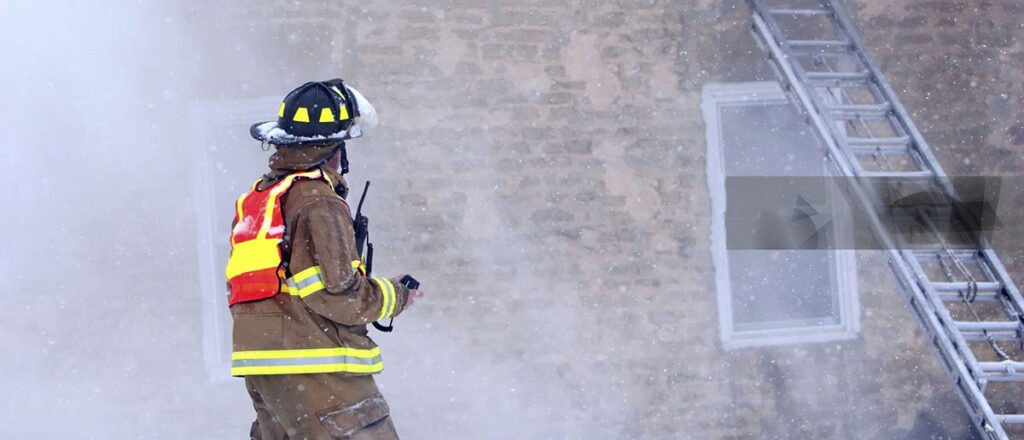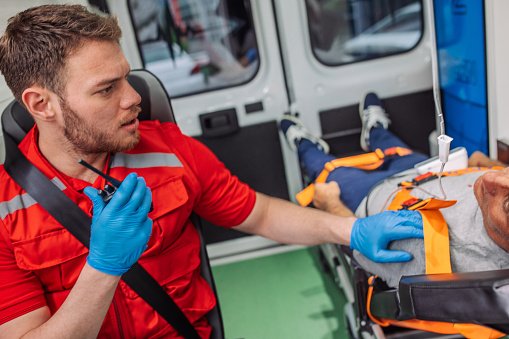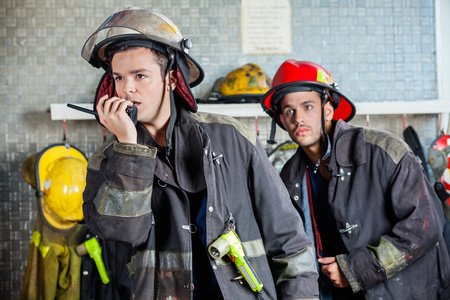Why Robust Two-Way Radios are the Lifeline for Fire & EMS

In the chaotic symphony of an emergency – the wail of sirens, the crackle of flames, the urgent cries for help – one element must rise above the din: clear, reliable, instant communication. For firefighters charging into infernos and EMS crews navigating life-or-death scenarios, their two-way radio isn’t just a tool; it’s their absolute lifeline. Choosing the right radio solution isn’t about features; it’s about mission success and responder safety.
The Stakes: When Silence is Deadly
Firegrounds and medical emergencies present unique and brutal challenges for communication:
- Extreme Environments: Radios face intense heat, crushing impact, blinding smoke, and torrential water. A radio failure here isn’t inconvenient; it’s catastrophic.
- Background Noise Mayhem: Roaring flames, screaming machinery, howling winds, and blaring sirens create a wall of sound that can drown out vital messages.
- Critical Coordination: Multiple teams (engine, ladder, rescue, EMS, command) need to operate in concert. Confusion or delay in communication can lead to disorientation, missed assignments, or tragic friendly encounters.
- Coverage Imperative: Signals must penetrate deep inside burning structures, reach crews in underground parking, and function reliably in rural expanses or dense urban canyons. Dead zones are unacceptable.
- Speed is Survival: Seconds count. Emergency communications demand instant connection – no dialing, no waiting. Push-To-Talk (PTT) must work flawlessly, every single time.
- Information Overload: Transmitting complex patient vitals, hazardous material details, or structural status updates requires clarity and accuracy under immense pressure.
The Solution: Purpose-Built Two-Way Radio Excellence
Generic radios won’t cut it. Fire & EMS demand specialized solutions engineered for their unique operational hell:
- Uncompromising Durability: MIL-STD-810G/H ratings for shock, vibration, water (IP67/68), and extreme temperatures are non-negotiable. Radios must survive repeated drops onto concrete and function while soaked.
- Crystal-Clear Audio, Even in Chaos: Advanced noise suppression (digital signal processing – DSP), loud audio output (>500mW), and high-quality microphones are essential to cut through background noise. Features like “voice announcement” for channel changes keep eyes on the scene.
- Intrinsically Safe Options: Radios operating in potentially explosive atmospheres (hazmat scenes, fuel spills) must be intrinsically safe certified (e.g., UL/CSA/ATEX/IECEx).
- Robust Coverage & Scalable Systems:
- Digital Standards (P25 Phase 1 & 2, DMR Tier III): Offer superior audio clarity, better range, enhanced security (encryption), efficient spectrum use, and advanced features like text messaging and GPS tracking.
- Simulcast Systems: Ensure seamless coverage across large areas, critical for mutual aid responses and sprawling incidents.
- Signal Boosters & Repeaters: Extend coverage deep inside structures or into challenging terrain.
- Interoperability Gateways: Bridge communication between different agencies (Fire, EMS, Police, State agencies) using different systems – a critical post-9/11 lesson.
- Lightning-Fast Group Communication:
- Instant PTT: Dedicated buttons for immediate contact with dispatch, command, or tactical groups.
- Multiple Channels & Scan: Quickly switch between incident command, tactical operations, EMS coordination, and mutual aid channels.
- Emergency Alerts: Dedicated “Man Down” or Emergency buttons instantly signal distress and transmit the user’s location.
- Enhanced Safety & Accountability:
- Integrated GPS: Real-time location tracking (RTL) for command to monitor crew positions inside structures or on large scenes, enhancing accountability and enabling rapid rescue if needed.
- Bluetooth Integration: Enables discreet communication via earpieces and connection to mobile data terminals in ambulances.
- Long Battery Life & Hot-Swappable Batteries: Ensures radios stay operational through extended incidents.
- Secure Communications: AES-256 encryption protects sensitive patient information (HIPAA considerations) and tactical operations.

Beyond the Fireground: EMS Critical Comms
For EMS, radios are vital for:
- Patient Handovers: Communicating vital signs, medical history, and interventions to receiving hospitals en route.
- Medical Direction: Consulting with physicians for complex care instructions.
- Multi-Casualty Incident (MCI) Management: Coordinating triage, treatment, and transport across numerous units.
- Ambulance-to-Ambulance Coordination: Sharing resources or requesting backup efficiently.
- Status Updates: Notifying dispatch of availability, en route, on scene, transporting, etc.
Choosing Your Lifeline: It’s Not Just Hardware
Selecting a radio solution requires careful consideration:
- Assess Needs: Size of department, typical call types, terrain, existing infrastructure, interoperability requirements.
- Digital Migration: Plan for the future. Analog systems are being phased out; digital offers significant advantages.
- System Architecture: Conventional, trunked, or hybrid? Simulcast required?
- Total Cost of Ownership (TCO): Include hardware, software, infrastructure, maintenance, and training.
- Reliability & Support: Choose a vendor with proven public safety expertise and 24/7 critical support.
- Training: Ensure all personnel are proficient in using the radios and their advanced features under stress.
In the high-stakes world of Fire & EMS, communication isn’t just about talking; it’s about coordinated action, situational awareness, and the safe return of every responder and victim. Investing in a robust, purpose-built two-way radio solution, backed by the right infrastructure and training, isn’t an operational expense – it’s a fundamental investment in mission effectiveness and human life. Don’t let your lifeline be the weakest link. Ensure your crews have the communication tools engineered to withstand the heat and deliver when every second counts.
Is your agency’s communication system built for the next big one? Assess your readiness today.

